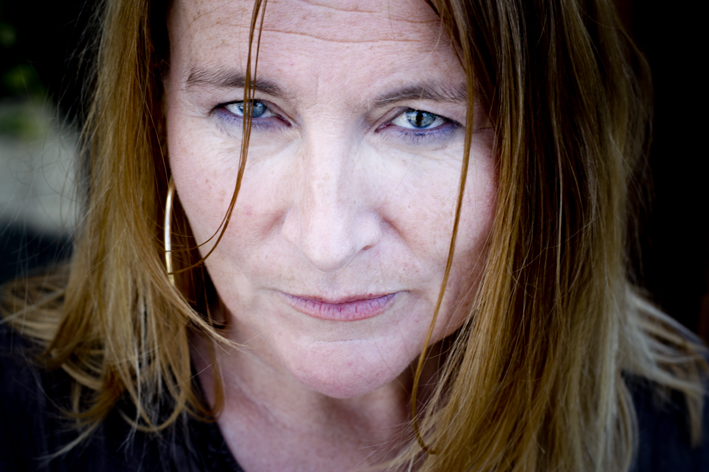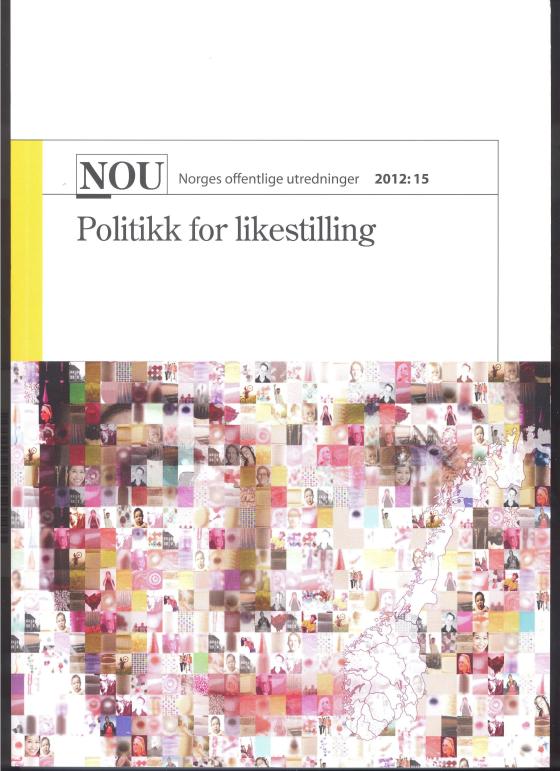Policy for equality - in research as well?
Norway’s new official report on equality says little about the problem of the low percentage of women in senior academic positions, but it presents a solid analysis of equality policy and makes some radical proposals.

The most comprehensive report on Norwegian equality policy to date was made public on 25 September. However, Official Norwegian Report 2012:15 Politikk for likestilling (“Policy for Equality”) does not thoroughly address the university and research sector. This is according to Agnete Vabø, Deputy Head of Research at the Nordic Institute for Studies in Innovation, Research and Education (NIFU).
“The report does not delve into the problem of the low percentage of female professors,” says Vabø.
She does not find it problematic, though, that the almost 400-page-long report does not prioritize the area.
“It doesn’t frustrate me very much because I think it’s a thorough report that goes in-depth into all of the underlying structures. It discusses the social framework conditions that are important for understanding the low percentage of women, including the low percentage of women in research and among professors. The report also calls for more knowledge about the processes and dynamics that are vital for understanding the reproduction of gender-segregated structures,” says Vabø.
Least male dominated
The report states that research and higher education, along with public administration, politics and culture, are the “least male dominated spheres of power in this survey. Here the percentage of men varies between 59 and 65 percent.” The most progress in the direction of greater gender balance is evident in a comparison of today’s figures with the survey of elites conducted by a government-appointed committee on power and democracy in 2001.
But there is one caveat: The figures for research and higher education in the survey on elites only encompass administrative leadership positions, not senior academic positions. This can give an inaccurate picture of the actual situation.

The University of Oslo has many women in top-level positions in the administration,” says Ella Ghosh, Gender Equality Adviser at the University of Oslo (UiO).
“However, the percentage of female professors is still lower than we would like. UiO’s action plan for gender equality prioritizes efforts to increase the percentage of women in senior scientific positions, but we have not achieved our goal,” she says.
Imprecise figures on elites
Hanne Mari Førland, who works with the Research Council’s Programme for Gender Balance in Senior Positions and Research Management (BALANSE), also reacts to the fact that scientific positions are not included in the figures on elites.
“The report characterizes research and higher education as among the least male-dominated spheres of power. If senior scientific positions had been included, the picture would look totally different. Unfortunately, there are major inequalities between men and women in senior academic positions, and the objective of the BALANSE programme is to improve the gender balance in precisely this area,” says Førland.
Contingent on funding
Speaking for the BALANSE programme, Førland says she is otherwise positive towards the report, which comments on the BALANSE programme’s potential to achieve good results, provided sufficient funding is available.

“I completely agree with that analysis,” says Førland, and emphasizes that the BALANSE programme is very pleased with the several million kroner they have been allocated in the national budget for 2013.
“By funding projects that combine career-promoting measures for individuals with broader measures targeted at specific problems at the institutions, I think the BALANSE programme can make a difference. Funding will also be awarded to research that gives us insight into barriers and opportunities. The commission is correct that these areas are under-researched,” says Førland.
Radical and resource-intensive
Ella Ghosh at the University of Oslo is pleased the report challenges the perception that gender equality has been achieved in Norway, but she points out that several of the proposed measures are extensive and resource-intensive.
“For those of us who work with gender equality, it’s positive that the report debunks the notion that gender equality has been more or less achieved and that mainstreaming has led to the integration of gender equality into all subject areas. But we need more time to assess the report in its entirety because it contains so much information about the equality area and many recommendations in several different policy areas that affect UiO as an institution. Some of the measures are controversial because they are radical, extensive or resource-intensive,” says Ghosh.
One of the measures that the commission itself highlighted in the press release about the report was the proposal for a three-party agreement on equality in employment that would solidify the employer’s duty to promote gender equality in accordance with legislation on gender equality and anti-discrimination. Another proposal calls for financial incentives to encourage non-traditional educational choices.
“I am certain this report will spark debate and interest,” says Ghosh.
“There needs to be a discussion when a government-appointed commission proposes a new directorate and regional offices, a three-party agreement similar to the agreement to achieve a more inclusive workplace, and a substantial use of resources to realize equality goals,” she says.
Ethnicity and class
Both Ghosh and Vabø appreciate the broader perspective on equality taken in the report.
“One strength of the report is that it is so nuanced. It views gender in connection with other factors, such as class and social background,” says Vabø.
Ghosh agrees:
“The documentation in this report looks at differences related to ethnicity and class through ‘gender glasses’, which will be useful as we further develop the equality activities at UiO”, she says.
A firm foundation
Although she has not read the report from cover to cover – it is long and comprehensive – Agnete Vabø of NIFU is enthusiastic so far.
“We can use the report as a basis for understanding the challenges facing the research system with regard to gender representation as well as for thinking about policy development,” she says.
Vabø, the researcher behind the recently published NIFU report “Women and men’s career cycles in Norwegian research”, hopes that Official Norwegian Report 2012:15 Politikk for likestilling (“Policy for Equality”) will be a catalyst for action.
“It is an in-depth, nuanced official report. It maintains a high standard, it is based on existing research, and it is very thorough. It is a solid piece of work!”
Translated by Connie Stultz.
The Equality Commission was appointed by the Norwegian Government in February 2010. The commission has been chaired by Professor Hege Skjeie and the objective has been to investigate Norwegian equality policy with regard to gender, phase of life, ethnicity and class.
The Equality Commission submitted its second report, Official Norwegian Report 2012:15 Politikk for likestilling (“Policy for Equality”), to Minister of Children, Equality and Social Inclusion Inga Marte Thorkildsen on 25 September 2012. This concluded the commission’s comprehensive work which sought to create a framework for a cohesive, knowledge-based equality policy in Norway. Earlier the commission submitted Norwegian Official Report 2011:18 Struktur for likestilling (“Structure for Equality”).
The deadline to submit comments to the report is 17 January 2013.
